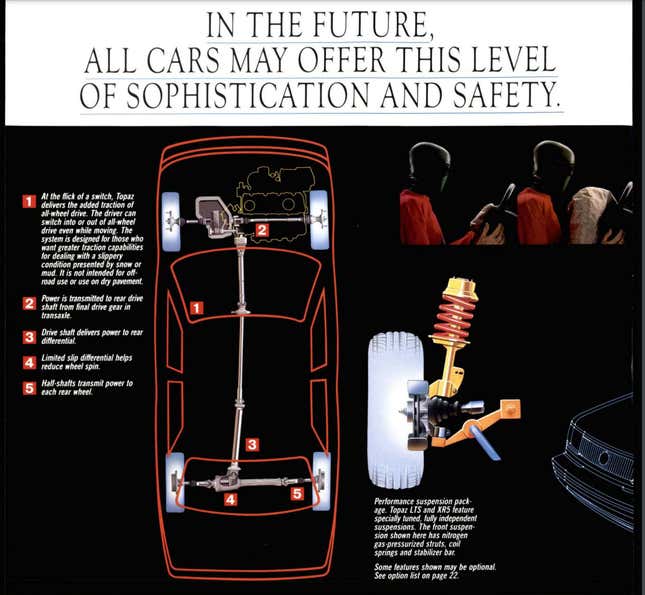The 1980s were a really unique time for the automotive industry. As companies crawled out of the Malaise Era, there were lots of new technologies or features being tried in places you wouldn’t expect. Take this MotorWeek comparison test of cars equipped with all-wheel drive from 1987, featuring everything from a compact sedan to a rear-engine minivan.
Aside from the Civic, every other nameplate from this test is gone, though the Subaru does have a modern equivalent. It’s interesting to see how many compact cars had an all-wheel drive-option back then, something nearly unheard of today outside of Subaru and a couple other outlier models..
Honda showed up for the test with a third-gen Civic Wagon, which came across as a small-ish MPV. The Civic Wagon’s ability to haul people and their stuff was excellent, something noted by MotorWeek. It could hold five adults and a good amount of luggage with ease. It had a 1.5-liter inline-4 with 72 horsepower that was paired with a six-speed manual transmission, the only option for the Wagon, and torque was sent through an all-wheel-drive system with a vicious coupling. There was a bit of extra ground clearance, but the Civic Wagon had no limited-slip differential, meaning this wasn’t something you could use to attack even the lightest of trails.

Volkswagen loaned MotorWeek a Vanagon with the Syncro all-wheel-drive system, which also gave the Vanagon slightly larger tires and an extra inch of ride height. Syncro was able to transfer power between the front and rear axles, a big deal back then, through the use of a wet viscous coupling that was able to measure wheel slippage. The Vanagon was even available with an optional locking rear diff, making it a bit more of a true off-roader than the other cars in the test.
The Mercury Topaz was an outlier in the test and probably the most unique because of how rare the option was for the Topaz and its Ford Tempo sibling. Only available from 1987 to 1991, checking the box for all-wheel drive on the Topaz and Tempo got you a high-output four-cylinder engine and an all-wheel-drive system consisting of a two-piece driveshaft. When a vacuum-actuated switch on the dash was pressed, a sliding clutch collar linked the transmission to the driveshaft sending power to a rear-mounted limited-slip diff engaging all-wheel drive. Ford says this was difficult to engineer, and while the system could be engaged at any speed, Ford warned that it was for “dirt roads or pavement in bad weather only.” MotorWeek found that, when using the system on wet cow paths, it provided excellent traction.

The other two cars in the test, the Subaru and Audi, come from brands who are no stranger to all-wheel drive. The Subaru GL-10 used a full-time four-wheel-drive system with a locking center diff, something Subaru says improved the car’s handling. Paired with a turbocharged 1.8-liter engine, the GL-10 was the second quickest car in the test at 10.3 seconds to 60 mph, though that’s not saying much. The Audi 5000 CS Quattro was the quickest. Its turbocharged 2.2-liter inline-5 and Quattro all-wheel-drive system resulted in a 9.5-second 0-to-60-mph run. Quattro was also the most sophisticated AWD system in the test. A dash-mounted switch allowed drivers to lock the center and rear diffs, which allowed for better traction in slippery conditions like a wet road or harsher stuff like mud or snow.
Sadly, all of these cars are lost to history. Things like price and buyer preference means that unless you pay big bucks, unique all-wheel-drive vehicles like these hardly exist anymore. Thank god MotorWeek’s Retro Reviews are around to remind us just how good we used to have it.

